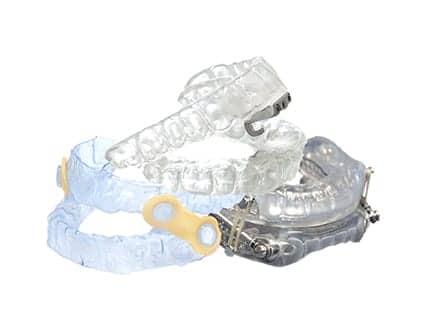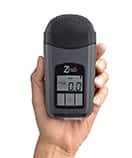For CPAP therapy, most people use Medicare’s definition to determine whether a patient is compliant. With no such standardized metric for oral appliance therapy, an American Academy of Dental Sleep Medicine task force steps up to provide a consensus-based definition.
By Yoona Ha
Like all device-based therapies for obstructive sleep apnea (OSA), oral appliance therapy is only effective when it’s used—preferably every time the patient is asleep, for the entire duration of sleep. But, unlike the most commonly prescribed therapy of CPAP, which has its compliance threshold defined by Medicare as an average of 4 hours a night for at least 70% of the nights, there has been no standardized metric to define what counts as oral appliance therapy (OAT) compliance.
The American Academy of Dental Sleep Medicine (AADSM) has now published a paper that provides a consensus-based, standardized, and OAT-specific definition of compliance. It states: “OAT compliance is defined as the appliance being worn for a minimum of ≥80% per night, starting when the OA is placed in the mouth and ending when the OA is removed from the mouth, ≥5 nights per week.”
Reza Radmand, DMD, chair of the AADSM Compliance Task Force, says, “Patient education is an integral component of compliance, so we built into the recommendations that it is necessary for qualified dentists to provide the education and encourage patients to get 7 or more hours of sleep and wear the appliance for the duration of their sleep….This definition views compliance as an ongoing metric that can be improved over time.”
A patient may be categorized as fully compliant, improving over time, or noncompliant. “‘Improving over time’ was thought to be a positive motivating factor for the patient,” the paper states.
The paper also details supported versus unsupported methods for measuring compliance. According to the task force, the supported methods are:
- questionnaires;
- sleep diaries;
- and microsensors.
In the adult population, the Epworth Sleepiness Scale and Berlin and STOP-BANG questionnaires are the most used. The questionnaire also must gather information regarding how many days a week the patient uses the oral appliance on average, average sleep duration, and what time the patient commonly inserts and removes the oral appliance.
For the sleep diary method, the paper says that, at minimum, the patient should track their sleep duration, as well as the time the oral appliance was inserted removed each night. The patient should also indicate if they are experiencing any nocturnal or daytime symptoms.
Microsensors, which can be embedded into oral appliances, are the one objective supported method. “Advantages of microsensors are that they objectively monitor compliance and tend to be accurate when compared to subjective report, they can often connect to data cloud services, have a long battery life (2 years), are biocompatible, and are efficient with memory and power, which can be beneficial for long-term studies of compliance,” the paper states.
Radmand, who is also a research collaborator at Brigham and Women’s Hospital, Division of Sleep Medicine at Harvard Medical School, says, “This paper highlights the great flexibility that dentists have in measuring compliance—whether they have their patient fill out a questionnaire, complete a diary at home, or wear an appliance with a compliance chip, there are multiple appropriate ways to measure your patient’s compliance in a way that works for both you and them.”
Unsupported methods include:
- clinical evaluation by a specialist (clinician estimation of the time of wear based on evaluation of appliance condition and patient report of their symptoms);
- evaluation of a patient’s personality traits;
- attached tooth microphones that traverse the lips to be connected to a computer or the use of fiberoptic sensors that detect pressure and temperature changes (though proof-of-concept papers exist for these methods); and
- pulse oximetry or pneumatic actuators.
“The task force felt that the unsupported methods simply did not have enough evidence or are not currently appropriate for the clinical setting at this time; however, the task force did review the literature related to these methods and discussed each of these methods,” Radmand says. “We felt that it was important to provide a transparent review of all methods discussed during the consensus conference. This information and the information covered in the forthcoming technologies section might spur additional research in these areas and encourage new methods for measuring compliance in the future.”
While CPAP noncompliance is a commonly discussed topic in sleep medicine, noncompliance can occur with any therapy. Radmand says, “It is also important to note that we clearly indicate that if a patient is deemed noncompliant after 1 year of use, they should be referred back to their physician with a recommendation for an alternative treatment. Given the long-term consequences of untreated sleep apnea, it is most important that patients have a treatment they use.”
Overall, Radmand cites some key takeaways from the compliance-defining paper. “As providers, we are always looking for established ways to optimize treatment for our patients, and we are hopeful that these recommendations will help qualified dentists do just that. Patients should work toward using their oral appliances during sleep time, every time. If comfort or side effects are impacting whether you wear your appliance, reach out to your qualified dentist.”
Yoona Ha is a freelance writer and healthcare public relations professional.
Reference
Radmand R, Chiang H, Di Giosia M, et al. Defining and measuring compliance with oral appliance therapy. J Dent Sleep Med. 2021;8(3).




